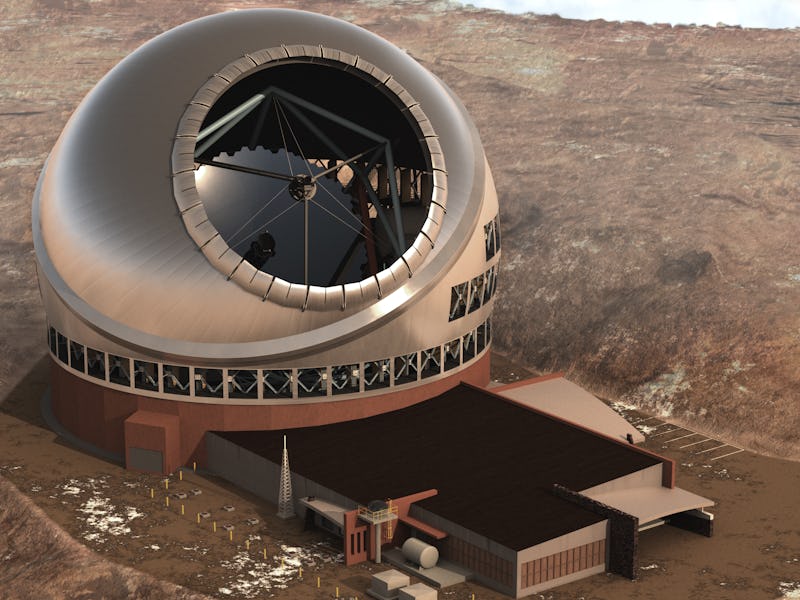The Thirty Meter Telescope — a proposed observatory with a planned location in Hawaii’s Mauna Kea volcano — will be the largest astronomical telescope ever built and a key instrument in evaluating whether other worlds could support extraterrestrial life. That’s if it actually gets built.
For several years now, TMT’s construction has been the center of a storm of protests spearheaded by Hawaii’s native community that has repeatedly halted development processes. An alternative location has now emerged, and if no agreement can be found between the telescope’s developers and the local community, the TMT will be moved to La Palma, in Spain’s Canary Islands.
The TMT International Observatory’s board of governors announced Monday that it selected La Palma as a backup location for the $1.5 billion observatory, which will be the largest extremely large telescope (ELT) every built. ELTs are a new design of telescopes that can peer farther into space and measure objects at optical and infrared frequencies, helping astronomers better understand the finer details of the celestial phenomena they’re looking at. The space community is particularly jazzed about using ELTs to study habitable characteristics in newly-discovered exoplanets and assess to what extent they could be settled by life — whether it’s future humans, or aliens. TMT is to be the first ELT built in the northern hemisphere, which makes it especially valuable to astronomers.
Mauna Kea, located on Hawaii's largest island
However, Mauna Kea is a sacred location for native Hawaiians. The dormant volcano holds a very significant place in the community’s culture, and TMT’s construction essentially constitutes a desecration of the site.
Construction of the TMT was halted first in October 2014 due to protests, and every effort to resume was blocked again by more protests. Last December, the state’s supreme court nullified TMT’s building permits, arguing due process was not followed when they were first approved.
New hearings began this month to seek new building permits, but it’s unclear whether TMT’s backers will be successful.
“We’ll be watching the situation in Hawaii carefully, hoping that continues to move forward,” Fiona Harrison, an astrophysicist at the California Institute of Technology in Pasadena and a member of the TMT board of governors, told Nature. “And the success of those efforts will determine whether we can build the TMT in Hawaii.”
The legal battle behind TMT has aggravated much of the astrophysical community who are eager to begin using the telescope’s advanced capabilities to study distant objects in space. La Palma is considered the second-best location for ground-based optical astronomy in the northern hemisphere.
La Palma, Canary Islands
Nevertheless, second-best has its flaws — La Palma is a little less than 2,000 meters lower in altitude than the site at Mauna Kea (4,050 meters high). This could limit some of TMT’s observations, especially for mid-infrared wavelengths used to study centers of galaxies.
That may be the cost of finding a peaceful resolution to this conflict. Just this year, China evicted 9,110 residents to build the Five-hundred-meter Aperture Spherical Radio Telescope, or FAST. The result is the world’s most powerful radio telescope that could one day find signs of intelligent alien life, but anything short of that goal will fail to erase its origins as the instrument that uprooted the lives of thousands of peaceful villagers.
If TMT hopes to avoid such a dark reputation, it may have to seriously consider giving up the fight to build in Mauna Kea and settle for La Palma.
